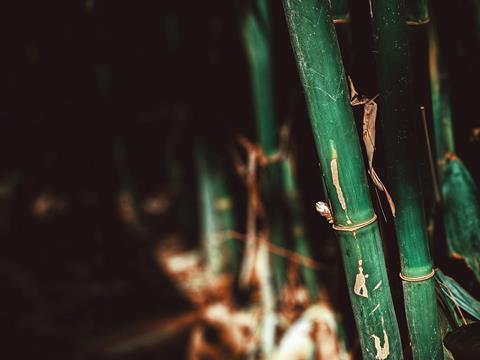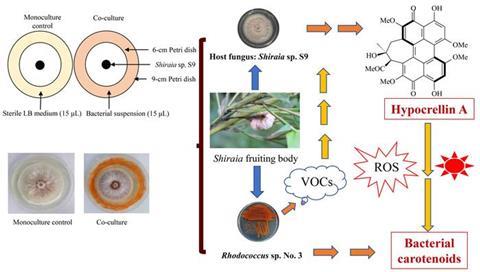The fruiting bodies of bambusicolous Shiraia fungi have long been used in traditional Chinese folk medicine. Hypocrellin A (HA) is a bioactive perylenequinone from the fruiting bodies and serves as an efficient photodynamic therapy photosensitizer.

Scientists have uncovered a molecular interplay between the host fungus Shiraia and its bacterial partners. When co-cultured without physical contact, bacterial volatile organic compounds (VOCs) of Rhodococcus sp. No. 3 – particularly dimethyl trisulfide and acetophenone – boosted fungal production of HA by 3.86-fold.
The VOCs increased membrane permeability and reactive oxygen species (ROS) in fungal cells, activating key HA biosynthesis genes. Conversely, light-activated HA inhibited bacterial growth through ROS generation, triggering a surprising counter-response: Rhodococcus sp. No. 3 ramped up production of antioxidant carotenoids (β-carotene, astaxanthin, etc.) by 1.76-fold to shield itself.
Feedback loop
“This VOC-induced HA stimulates bacterial carotenoid synthesis, creating a feedback loop,” explains the research team. The bacterial carotenoids demonstrated exceptional radical-scavenging capacity (67% hydroxyl radical neutralization), suggesting mutual adaptation within the fruiting body microenvironment.

The study, published in Mycology, reveals how cross-kingdom signaling regulates secondary metabolites in fungal microbiomes. This mechanism could enable dual-production of fungal HA for photodynamic cancer therapy and bacterial carotenoid antioxidants through co-culture biotechnology.







No comments yet